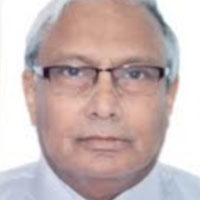|
|
Merit subsidies |
Non-merit subsidies |
Total subsidies |
||||||||||||||||||
|
State |
Social sector |
Economic sector |
Social sector |
Economic sector |
Social sector |
Economic sector |
Total |
||||||||||||||
|
|
87-88 |
11-12 |
15-16 |
87-88 |
11-12 |
15-16 |
87-88 |
11-12 |
15-16 |
87-88 |
11-12 |
15-16 |
87-88 |
11-12 |
15-16 |
87-88 |
11-12 |
15-16 |
87-88 |
11-12 |
15-16 |
|
(0) |
(1) |
(2) |
(3) |
(4) |
(5) |
(6) |
(7) |
(8) |
(9) |
(10) |
(11) |
(12) |
(13) |
(14) |
(15) |
(16) |
(17) |
(18) |
(19) |
(20) |
(21) |
|
Andhra Pradesh (Telangana) |
3.8 |
2.8 |
3.3 |
0.1 |
0.1 |
0.1 |
2 |
1.2 |
1.5 |
4 |
4.5 |
4.7 |
5.8 |
4 |
4.8 |
4.1 |
4.6 |
4.7 |
10 |
8.6 |
9.6 |
|
Bihar (includes Jharkhand) |
6 |
4.2 |
4.4 |
0.3 |
0.1 |
0.2 |
1.8 |
1.4 |
1.5 |
7.2 |
5.7 |
5 |
7.8 |
5.6 |
6 |
7.5 |
5.8 |
5.3 |
15.3 |
11.4 |
11.2 |
|
Gujarat |
4.1 |
3.3 |
3.2 |
0.1 |
0.1 |
0.1 |
1 |
0.9 |
0.7 |
4.6 |
2.5 |
3.1 |
5.1 |
4.2 |
3.9 |
4.7 |
2.6 |
3.2 |
9.7 |
6.8 |
7.1 |
|
Haryana |
3.1 |
2.5 |
2.8 |
0.1 |
0.1 |
0.1 |
0.9 |
0.8 |
0.8 |
4.4 |
2.3 |
2.9 |
4 |
3.4 |
3.6 |
4.4 |
2.5 |
3 |
8.4 |
5.8 |
6.5 |
|
Karnataka |
4 |
2.7 |
2.8 |
0.1 |
0.2 |
0.4 |
1.6 |
1.3 |
1.5 |
4.1 |
4.2 |
3.9 |
5.6 |
3.9 |
4.3 |
4.2 |
4.4 |
4.2 |
9.8 |
8.4 |
8.5 |
|
Kerala |
4.7 |
2.9 |
2.8 |
0.2 |
0.3 |
0.3 |
1.3 |
1 |
1.7 |
2.7 |
1.8 |
1.7 |
6 |
3.9 |
4.5 |
2.9 |
2.1 |
2 |
8.8 |
6 |
6.5 |
|
Madhya Pradesh (includes Chhattisgarh) |
4.9 |
4.1 |
4.8 |
0.2 |
0.2 |
1 |
1.7 |
1.1 |
1.9 |
4.6 |
4.4 |
4.1 |
6.5 |
5.2 |
6.7 |
4.8 |
4.6 |
5.1 |
11.3 |
9.8 |
11.8 |
|
Maharashtra |
3.5 |
3 |
2.7 |
0.2 |
0.1 |
0.1 |
0.7 |
0.9 |
0.8 |
2.1 |
2.9 |
2.9 |
4.2 |
3.8 |
3.5 |
2.3 |
3 |
3 |
6.5 |
6.8 |
6.5 |
|
Orissa |
3.8 |
3.4 |
4.5 |
0.2 |
0.5 |
0.5 |
1.5 |
1.3 |
1.1 |
4.7 |
3.6 |
3.7 |
5.3 |
4.7 |
5.7 |
4.8 |
4 |
4.2 |
10.1 |
8.7 |
9.8 |
|
Punjab |
3.2 |
2.7 |
2.7 |
0.1 |
0 |
0.1 |
0.8 |
0.5 |
0.6 |
4.7 |
2.4 |
1.9 |
4 |
3.1 |
3.3 |
4.8 |
2.4 |
2 |
8.8 |
5.6 |
5.3 |
|
Rajasthan |
4.9 |
4.8 |
5.1 |
0 |
0 |
0 |
0.9 |
0.6 |
0.8 |
6.2 |
2.2 |
3.1 |
5.8 |
5.4 |
6 |
6.2 |
2.3 |
3.1 |
12 |
7.7 |
9.1 |
|
Tamil Nadu |
3.4 |
2.7 |
2.7 |
0.3 |
0.1 |
0.1 |
0.8 |
0.6 |
0.6 |
4.2 |
2.2 |
1.7 |
4.2 |
3.3 |
3.3 |
4.5 |
2.3 |
1.8 |
8.8 |
5.6 |
5.1 |
|
Uttar Pradesh (includes Uttarakhand) |
3.4 |
4.4 |
4.3 |
0.2 |
0.3 |
0.2 |
0.9 |
0.8 |
1.7 |
4.3 |
4.5 |
5.5 |
4.4 |
5.2 |
6 |
4.4 |
4.8 |
5.7 |
8.8 |
10 |
11.7 |
|
West Bengal*** |
3.5 |
3.9 |
2.5 |
0.2 |
0.1 |
0.1 |
0.9 |
0.7 |
1 |
2.7 |
1.9 |
2.2 |
4.4 |
4.6 |
3.5 |
2.9 |
2 |
2.2 |
7.3 |
6.6 |
5.7 |
|
All states* |
3.4 |
3 |
3 |
0.1 |
0.1 |
0.2 |
1 |
0.8 |
1 |
3.5 |
2.9 |
3.1 |
4.4 |
3.8 |
4.1 |
3.7 |
3.1 |
3.3 |
8.1 |
6.9 |
7.3 |
|
Centre* |
0.3 |
0.9 |
0.2 |
0.7 |
1.5 |
1.1 |
0.3 |
0.1 |
0.2 |
3.5 |
1.3 |
1.4 |
0.7 |
0.9 |
0.4 |
4.2 |
2.8 |
2.5 |
4.9 |
3.8 |
2.9 |
|
All states + Centre* |
3.7 |
3.9 |
3.2 |
0.9 |
1.6 |
1.3 |
1.3 |
0.9 |
1.2 |
7 |
4.3 |
4.5 |
5 |
4.8 |
4.5 |
7.9 |
5.9 |
5.8 |
12.9 |
10.7 |
10.3 |
|
All states' average** |
4 |
3.4 |
3.5 |
0.2 |
0.2 |
0.2 |
1.2 |
0.9 |
1.2 |
4.3 |
3.2 |
3.3 |
5.2 |
4.3 |
4.6 |
4.5 |
3.4 |
3.5 |
9.7 |
7.7 |
8.2 |
Panel 2: 2011-12
Panel 3: 2015-16

